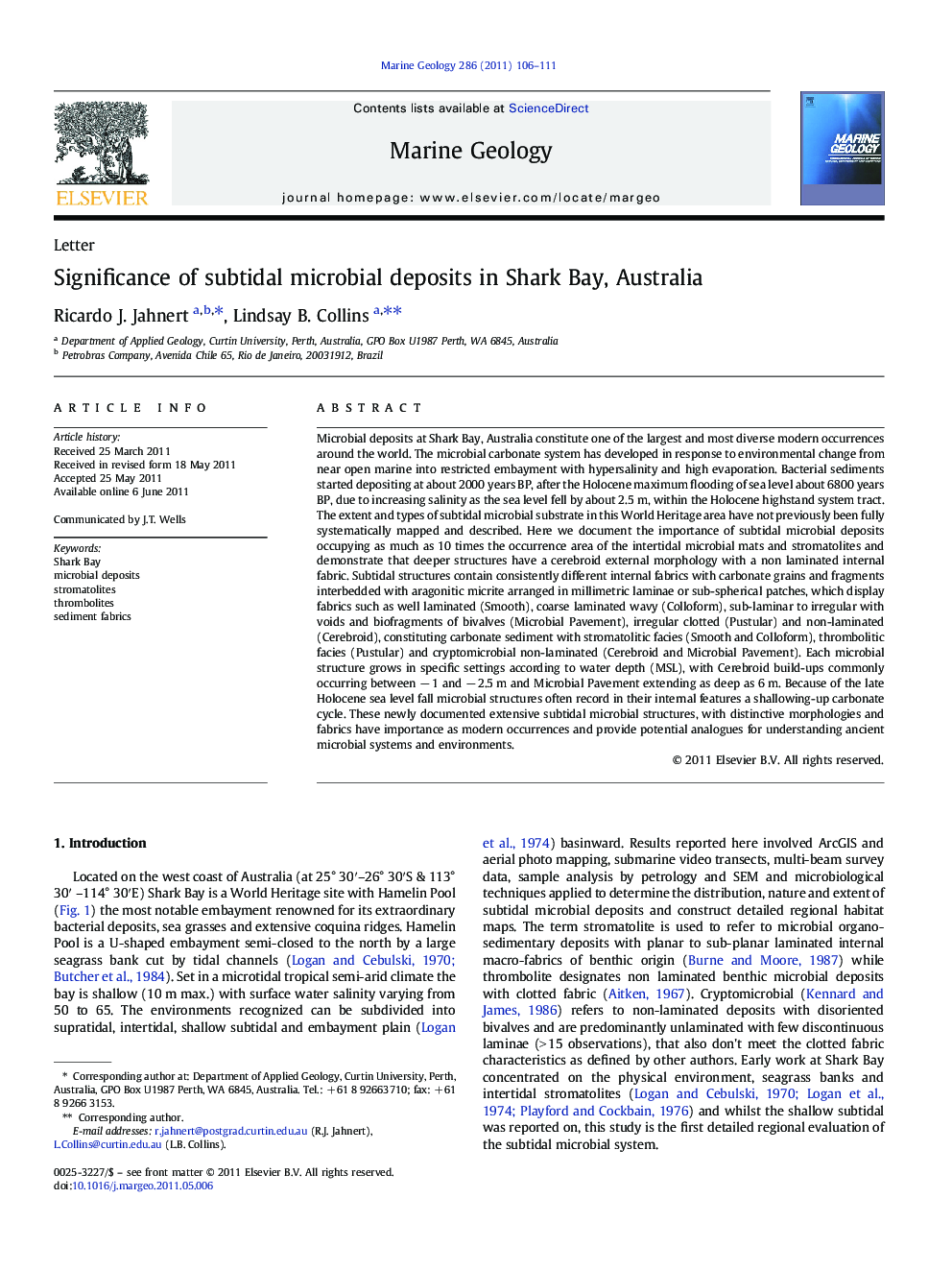| کد مقاله | کد نشریه | سال انتشار | مقاله انگلیسی | نسخه تمام متن |
|---|---|---|---|---|
| 4718672 | 1639134 | 2011 | 6 صفحه PDF | دانلود رایگان |

Microbial deposits at Shark Bay, Australia constitute one of the largest and most diverse modern occurrences around the world. The microbial carbonate system has developed in response to environmental change from near open marine into restricted embayment with hypersalinity and high evaporation. Bacterial sediments started depositing at about 2000 years BP, after the Holocene maximum flooding of sea level about 6800 years BP, due to increasing salinity as the sea level fell by about 2.5 m, within the Holocene highstand system tract. The extent and types of subtidal microbial substrate in this World Heritage area have not previously been fully systematically mapped and described. Here we document the importance of subtidal microbial deposits occupying as much as 10 times the occurrence area of the intertidal microbial mats and stromatolites and demonstrate that deeper structures have a cerebroid external morphology with a non laminated internal fabric. Subtidal structures contain consistently different internal fabrics with carbonate grains and fragments interbedded with aragonitic micrite arranged in millimetric laminae or sub-spherical patches, which display fabrics such as well laminated (Smooth), coarse laminated wavy (Colloform), sub-laminar to irregular with voids and biofragments of bivalves (Microbial Pavement), irregular clotted (Pustular) and non-laminated (Cerebroid), constituting carbonate sediment with stromatolitic facies (Smooth and Colloform), thrombolitic facies (Pustular) and cryptomicrobial non-laminated (Cerebroid and Microbial Pavement). Each microbial structure grows in specific settings according to water depth (MSL), with Cerebroid build-ups commonly occurring between − 1 and − 2.5 m and Microbial Pavement extending as deep as 6 m. Because of the late Holocene sea level fall microbial structures often record in their internal features a shallowing-up carbonate cycle. These newly documented extensive subtidal microbial structures, with distinctive morphologies and fabrics have importance as modern occurrences and provide potential analogues for understanding ancient microbial systems and environments.
Journal: Marine Geology - Volume 286, Issues 1–4, 1 August 2011, Pages 106–111